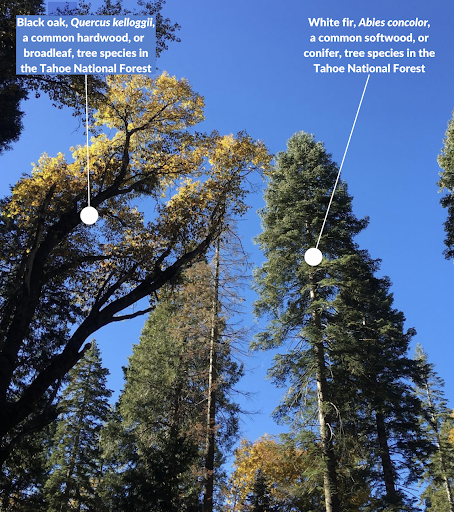What is Hardwood Culturing?


To perform thinning and break up fuel continuity for a more fire-resilient forest structure, implementation partners familiar with this ecosystem’s specific needs utilize a practice known as “hardwood culturing.”
Written by: Annapurna Hotzapple, Project Associate
Forest management activities needed to restore ecosystem health are deeply dependent on the specific characteristics of a given landscape. Even within one ecosystem type, there are niches, sensitive areas, and significant cultural and natural resources that vary spatially. Blue Forest believes that the organizations and local groups already on the ground, who know and understand the nuances and challenges of a given terrain, are best suited to plan and permit a project and decide which treatments should be implemented. As our implementation partner on the Yuba Projects, the National Forest Foundation has a wealth of experience with the Tahoe National Forest, including experience with a restoration practice called hardwood culturing.
Due to fire suppression, the Tahoe National Forest is overstocked and has more trees growing than the ecosystem is adapted for. The unnatural density of the overstory blocks sunlight and heavily shades the forest floor, creating competition and preventing some trees from growing to their full height. When trees are stunted and blocked by larger trees or held in the understory, they are referred to as “suppressed.” If a larger tree falls and a space opens up in the canopy, the suppressed trees can “release” and grow into the newly available spaces. But unless some kind of disturbance event changes the structure of the forest, these suppressed trees generally remain at mid-canopy height. At this height, they can act as ladder fuels, continuous material which can easily carry a potential fire into the canopy and trigger severe fire effects and high tree mortality.
The North Yuba watershed in the Sierra Nevada supports diverse tree species, such as white fir, Douglas fir, sugar pine, ponderosa pine, and tanoak. The term “tree” is not a proper taxonomic group but refers instead to a grouping of diverse vascular plants. Some of these trees, like the conifers or “evergreen” species, are gymnosperms, often called softwoods. Some are angiosperms, often called hardwoods. The distinguishing feature is leaf structure; softwoods typically have needles, while hardwoods usually have broad leaves. While both hardwoods and softwoods can be suppressed, the hardwoods, in particular, pose a unique management challenge on the Yuba I and Yuba II projects.
Some species of hardwoods have two forms: the classic tree form, when the plant has a main trunk and grows primarily straight and vertical, or the shrub form, when the plant has multiple stems and is shorter and broader. On the Yuba Project, tanoak, Notholithocarpus densiflorus, has become overly dense due to a lack of fire. But in this case, classic mechanical thinning actually exacerbates the existing fuel continuity problem due to tanoak’s unique physiological response to cutting and mastication.
Cutting the stems of tanoaks typically causes this plant species to resprout into a structure with many new stems and thick branches. If cut down, this tree typically grows back in a denser shrub form. Tanoak is shade tolerant and can survive in this shrub form in the understory for a long time. In fact, there is an area on the Yuba II footprint called “Day Dark,” a nickname indicating both how thick the shrubs are and the need for thinning and fuel treatment in this area.
To perform thinning and break up fuel continuity for a more fire-resilient forest structure, implementation partners familiar with this ecosystem’s specific needs utilize a practice known as “hardwood culturing.” Instead of cutting these tanoaks down entirely, which would prompt a multi-stem resprout in the future, hardwood culturing selects and prioritizes two to three specific stems on the plant. These stems are left alone, and any others are cut back. This way, instead of thickly resprouting multiple stems, the plant responds by putting energy into the remaining stems. As a management technique, hardwood culturing keeps the forest matrix less dense than if the plant were left alone or were cut back entirely.